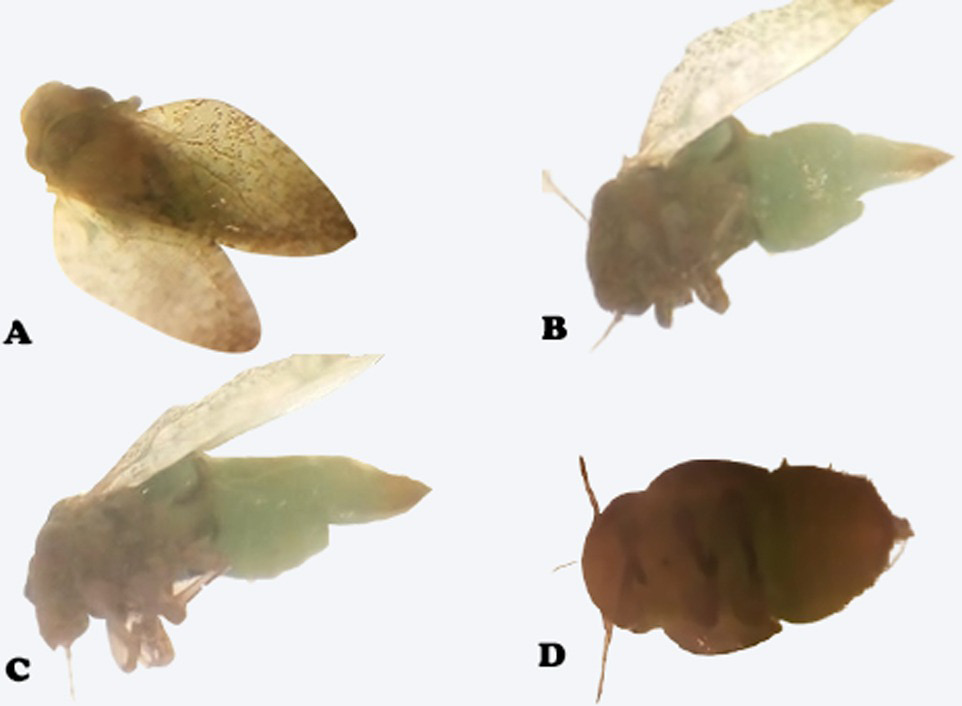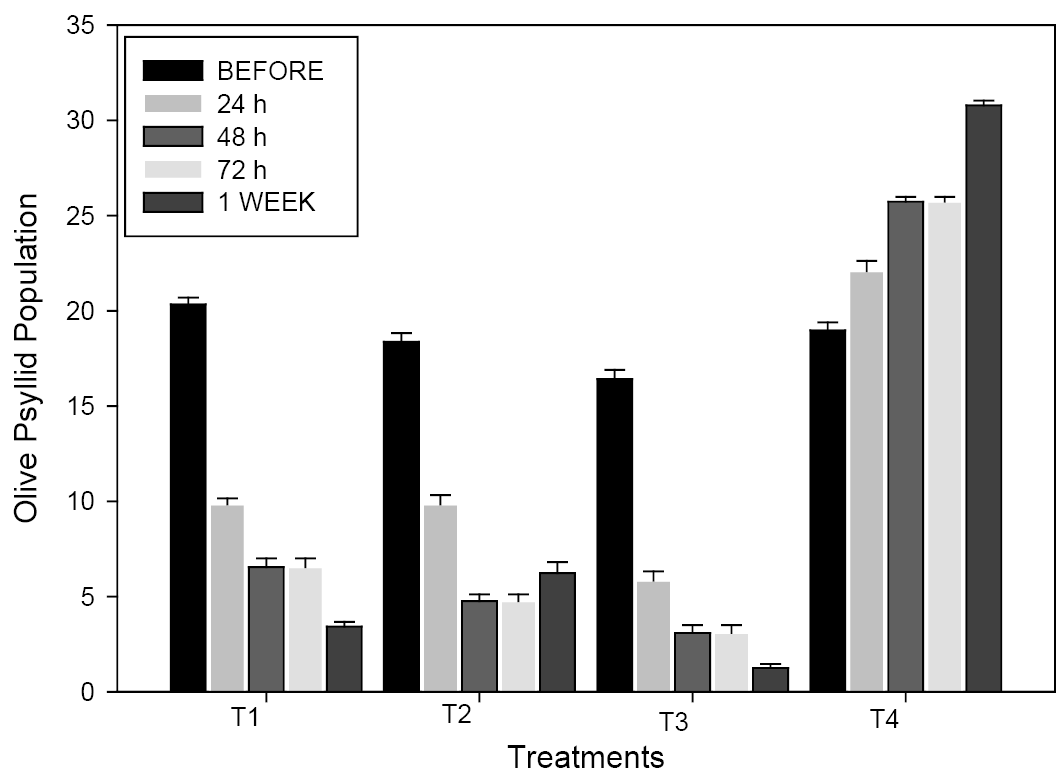A Behavioral Study of Different Chemicals for the Management of Olive Psyllids
A Behavioral Study of Different Chemicals for the Management of Olive Psyllids
Muhammad Arabi Awan1, Hafiz Husnain Nawaz2*, Naeem Akhtar2 and Azmat Ali Awan3
Efficacy of different insecticides on olive psyllids. Y- axis exhibited the olive psyllid population decrease. X-axes represent different chemical treatments, including the control treatments. Other color bars show the recorded data at different duration. Here, T1 represents CHLORPYRIPHOS 50% EC treatment, T2 exhibited the THIAMETHOXAM 25 WG treatment, T3 represents Detergent treatment, and T4 is the control treatment in which we applied only water.








